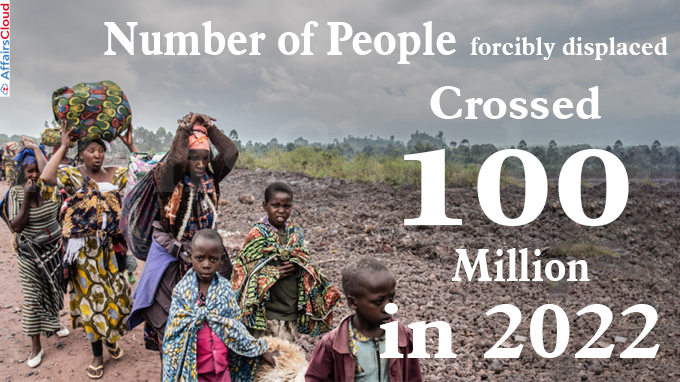 According to the report “Turning the Tide on Internal Displacement: A Development Approach to Solutions,” more than 100 million people were forcibly displaced in 2022 for the first time, the majority of whom were forcibly displaced within their own countries.
According to the report “Turning the Tide on Internal Displacement: A Development Approach to Solutions,” more than 100 million people were forcibly displaced in 2022 for the first time, the majority of whom were forcibly displaced within their own countries.
- The report was created by the United Nations Development Programme (UNDP) in partnership with the Internal Displacement Monitoring Centre (IDMC).
- The IDMC gathered the data from January 2021 to January 2022.
Key Concerns
i.Due to conflict, violence, disasters, and climate change, more than 59 million people were forcefully displaced within their own countries at the end of 2021.
ii.It was the highest global figure ever recorded and more than double the number reported 10 years ago.
iii.It was also before the 2022 Russia-Ukraine war, in which an estimated 6.5 million people were internally displaced.
Internally Displaced Persons (IDPs)
- Internally Displaced Persons (IDPs) may endure for years without proper access to basic services, social security, and decent work, rendering them unable to exercise their full citizenship rights and serve as agents of growth in their communities.
- IDP marginalisation is a significant barrier to reaching the Sustainable Development Goals (SDGs) and diminishes long-term peace, stability, and recovery.
Key Points:
i.Internal displacement can have an impact on governments, resulting in significant global costs and losses worth more than USD 21 billion per year.
ii.The direct global impact of internal displacement was estimated at more than USD 21.5 billion in 2021.
iii.Sub-Saharan Africa, the Middle East, North Africa, and parts of the Americas have historically been the regions badly affected by internal displacement brought on by conflict and violence.
iv.The report included data gathered from a survey of 2,653 IDPs and their communities in 8 host nations.
- These nations include Vanuatu, Colombia, Ethiopia, Indonesia, Nepal, Nigeria, Papua New Guinea, and Somalia.
v.The World Bank (WB) estimates that if no immediate action is taken, by 2050, climate change might cause more than 216 million people to move within their own countries.
vi.Five key pathways to development solutions were proposed. These comprise:
- Strengthening governance institutions
- Boosting socio-economic integration through access to jobs and services
- Restoring security
- Enhancing participation
- Building social cohesion
Recent Related News:
According to the 2022 Mid-Year Trends report released by the United Nations High Commissioner for Refugees (UNHCR), the number of forcibly displaced people across the globe was estimated at 103 million. Compared to the end of 2021, the number of forcibly displaced people in 2022 has increased by more than 15% (13.6 million). This is the biggest proportional increase between years since 1979-1980.
About the United Nations Development Programme (UNDP):
Administrator – Achim Steiner
Headquarters – New York, United States (US)
Establishment – 1965




